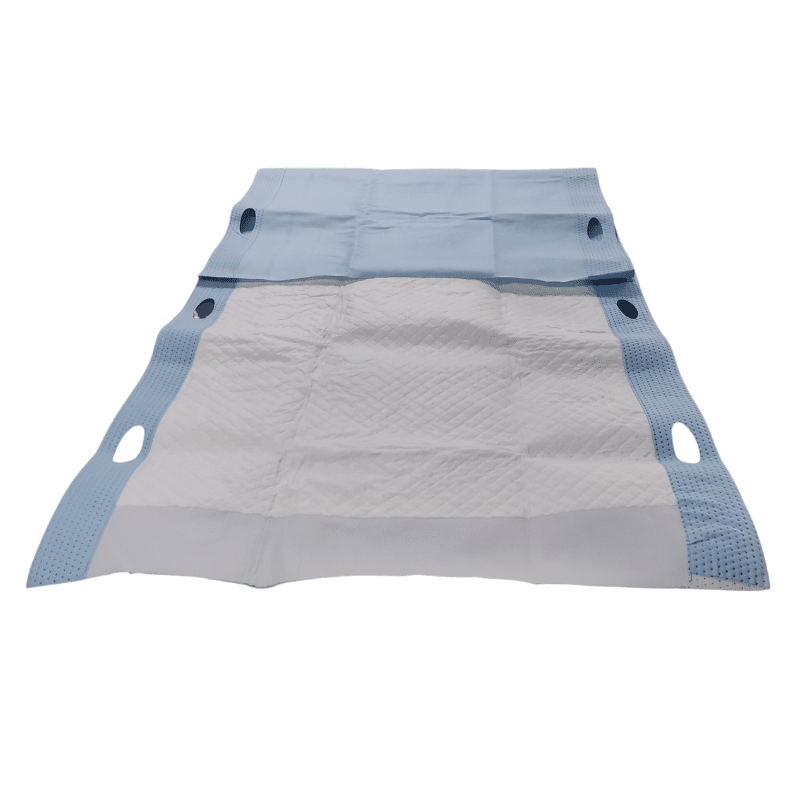Bedridden patient care is hard work. It needs skill, speed, and heart. Medical staff need tools that save time and protect the body. This is why disposable patient transfer pads feel like a small “miracle.” They help you move, turn, and lift a person with less strain. They also help keep the bed clean and dry. They are simple to use, and they are made for safe, one‑time use.
What are disposable patient transfer pads?
- They are flat pads that go under the patient.
- They help with repositioning e lateral transfer.
- They have a soft não tecido top to protect skin.
- They have a à prova de água back to guard the mattress.
- Some styles add handles or low‑friction layers to slide with ease.
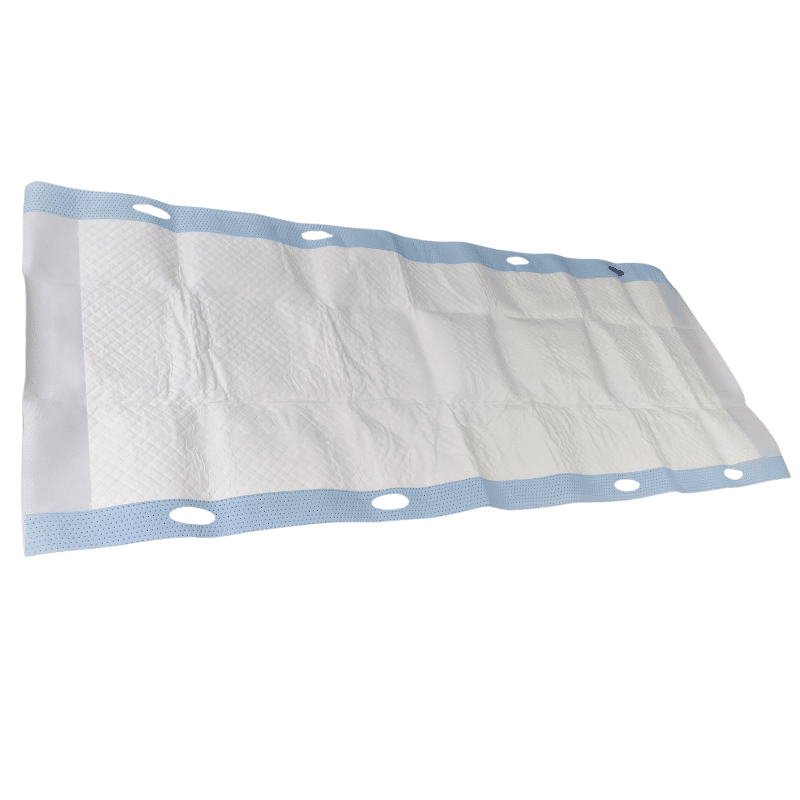
Why are they a must‑have for medical staff?
- They help lower strain on the back, arms, and shoulders.
- They help reduce friction e shear on the patient’s skin.
- They help with infection control because they are single use.
- They are fast to set up and easy to remove and dispose.
You can pick from many styles to match your daily jobs:
- For heavy leaks or bigger bodies, see the folha de transferência descartável de grande absorção.
- For strong, layered build, try a Lençol de transferência de doentes descartável com várias camadas.
- For smooth moves and safe grip, use a Lâmina de transferência de doentes descartável com pegas.
- For simple turning and pulling, a disposable draw sheet works well.
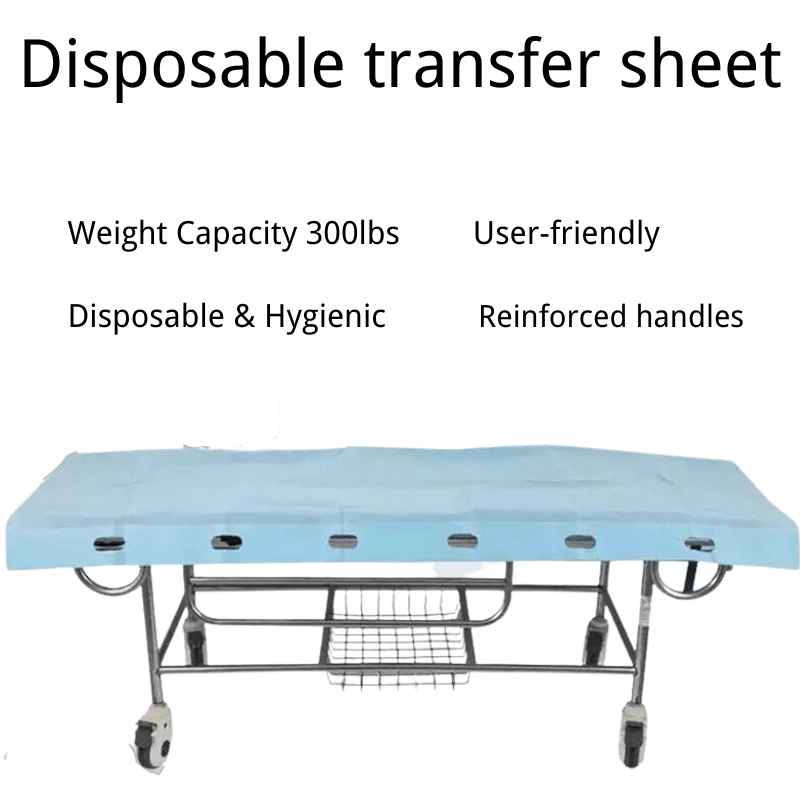
Key benefits of disposable patient transfer pads
- Safe moving: Pads support better body mechanics and help prevent caregiver injury.
- Skin care: The soft top lowers rub. Less rub means less risk of redness.
- Clean bed: O leak‑proof back guards the sheet and mattress from drips.
- Fast change: When the pad is wet ou soiled, you change it in seconds.
- One pad, one patient: This helps stop cross‑contamination.
Main features to look for
- Absorbent core: Pulls in fluid fast and locks it away from skin.
- Waterproof backing: Stops leaks and protects linen and mattress.
- Strong seams: Sealed edges resist tears and keep fluid inside.
- Low‑friction surface: Helps with smooth repositioning.
- Handles or wings (some models): Give a safer grip for the team.
- Right size: Small, medium, large, or extra large for full hip and torso cover.
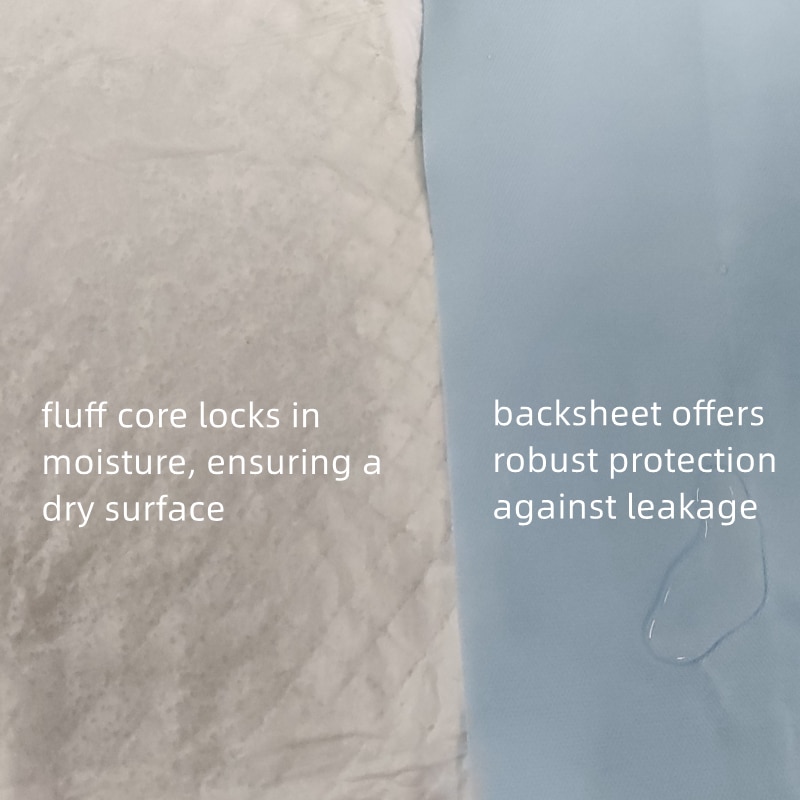
How to use disposable patient transfer pads
- Place the pad under the hips and lower back. The soft side faces up. The à prova de água side faces down.
- For a safe roll, bend the far knee, log‑roll to the side, and tuck half the pad. Roll back, pull through, and smooth all wrinkles.
- For a side move, count down with your team. Keep the spine in line. Use the pad to slide across, not to lift straight up.
- Do not stack many pads. One pad works best and lowers heat and rub.
- Check often. Change the pad when wet, soiled, or smelly.
- Fold the dirty side in. Roll tight to trap fluid. Put in the right waste bin.
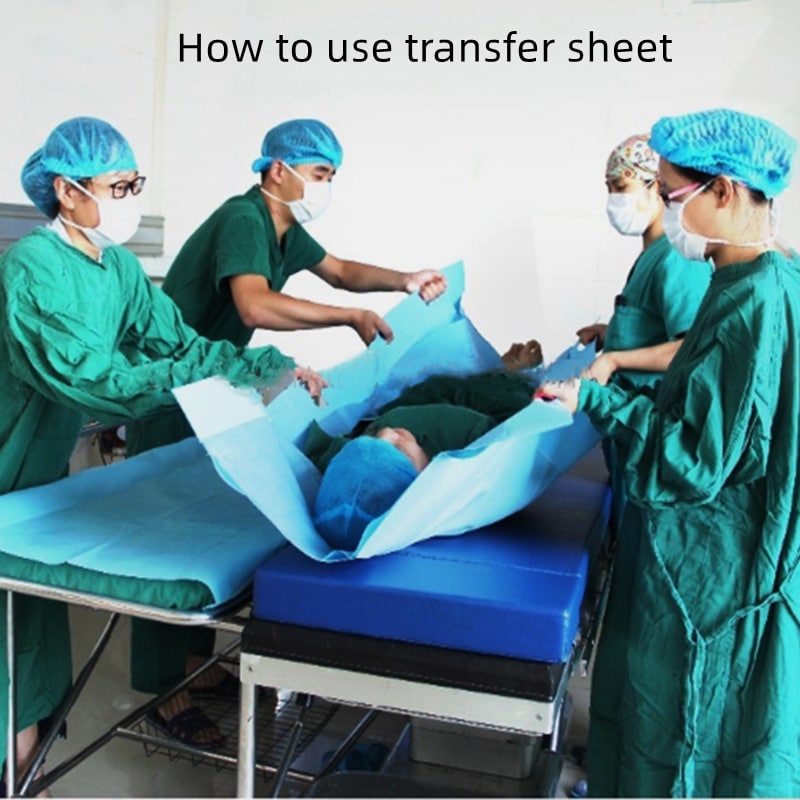
How to choose the right pad
- Absorbency level: Light for small leaks. Heavy for night care or big spills.
- Tamanho: Pick a size that covers from lower back to mid‑thigh. Extra width helps stop edge leaks.
- Strength: Pick higher strength for frequent turns or heavy patients.
- Slide vs. grip: A slick sheet helps with sliding. A quilted top helps hold position.
- Handles: Choose handles when you need firmer control with a team move.
Where to use patient transfer pads
- In hospital rooms for daily turns, bed to stretcher, and chair to bed.
- In home care for safer family care and easy cleanup.
- In long‑term care to protect skin and keep beds dry.
- In ER e ambulance moves when time is short.
- In imaging e post‑op when smooth turns help wires and lines stay safe.
Tips for safe, smooth care
- Use a team for heavy moves. Count and move as one.
- Keep the bed at a safe height. Lock the wheels.
- Keep the pad flat. Remove wrinkles to lower friction.
- Never use the pad as a lift sheet for a full deadlift. Slide, do not hoist.
- Put on gloves. Wash hands after each disposal.
- Protect skin: pat dry, not rub. Use barrier care if the skin is damp.
Cost and value
- Each pad is single use, but it can save time and laundry.
- Less time changing sheets means more time for care.
- Fewer spills and fewer injuries can lower total cost.
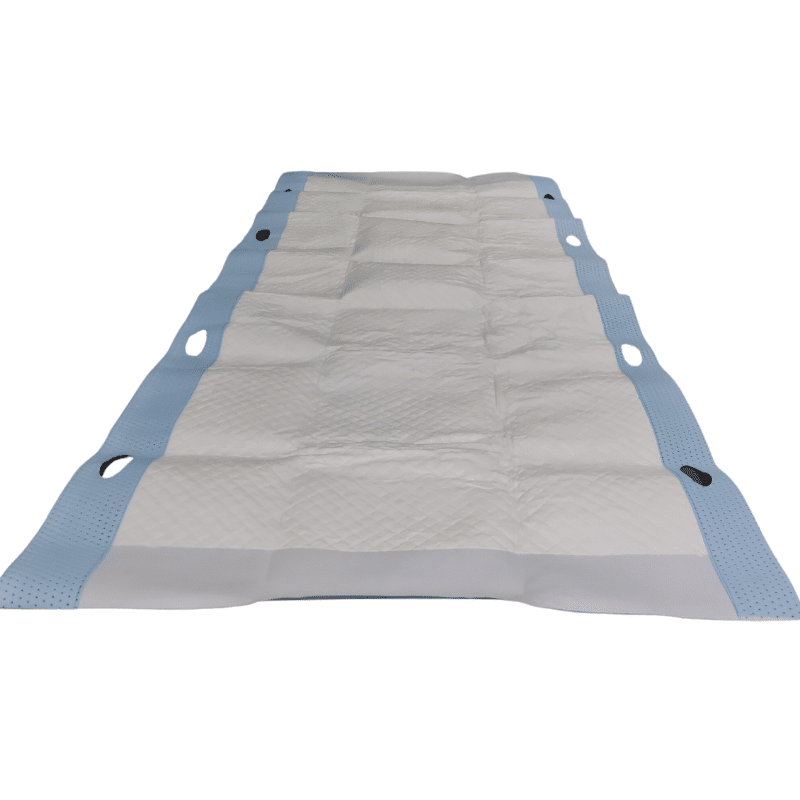
Real‑life wins
- A nurse can turn a patient in less than a minute with less back strain.
- A caregiver at home can keep the bed dry all night with the right absorbency.
- A tech can slide a patient for an exam with fewer pulls and fewer stops.
Why “miracle”?
- It is simple. It is fast. It just works. When you must move a bedridden patient, you need a tool you trust. Disposable patient transfer pads help you do the job right the first time. They cut mess. They cut strain. They care for the skin. They help the whole team.
What to try next
- Need more hold and absorbency? See the folha de transferência descartável de grande absorção.
- Want a strong layered build? Pick a Lençol de transferência de doentes descartável com várias camadas.
- Need better grip for two‑person moves? Use a Lâmina de transferência de doentes descartável com pegas.
- Planning many turns a day? Keep a stack of disposable draw sheet on hand.
With the right disposable patient transfer pads, medical staff can give safer, kinder, and cleaner care. The work feels lighter. The bed stays dry. The patient is calm. That is the true “miracle” in bedridden patient care.

